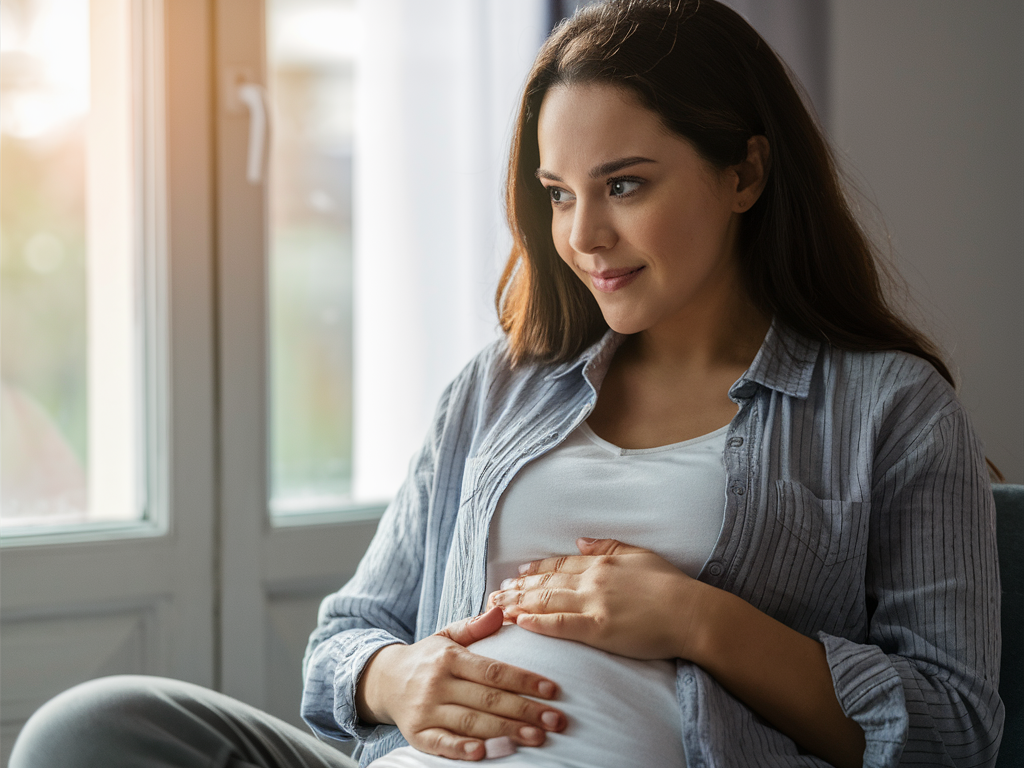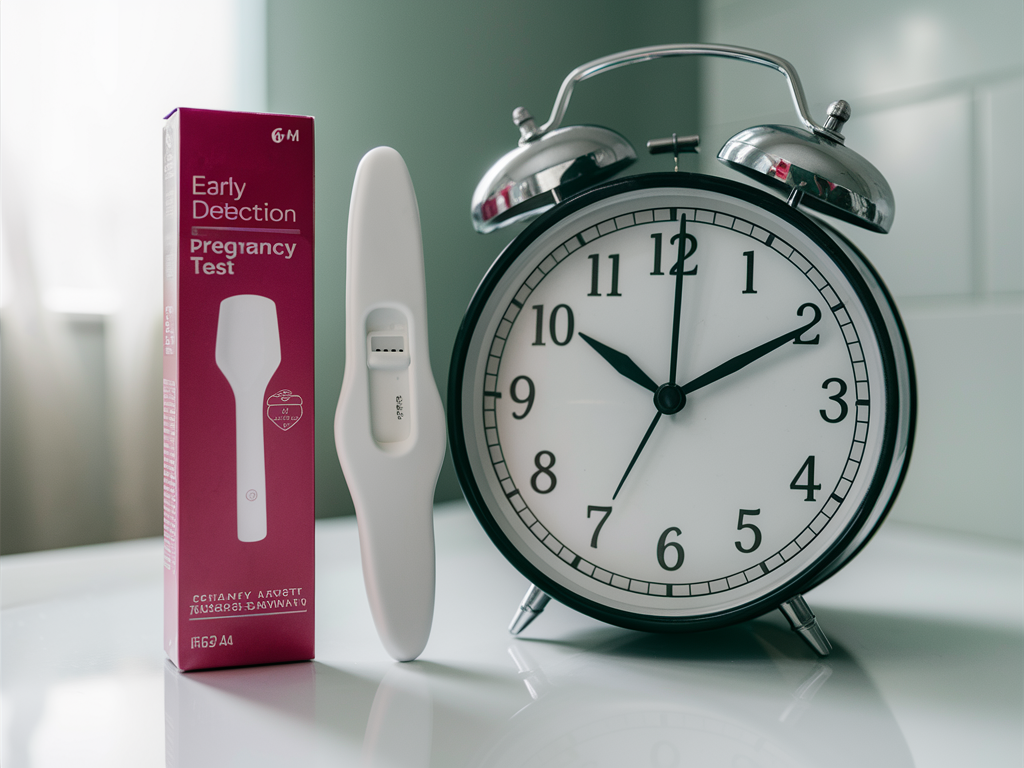Pregnancy tests are diagnostic tools that detect human chorionic gonadotropin (hCG), a hormone produced by the placenta shortly after fertilization. These tests work by identifying the presence of hCG in urine or blood, with most home tests utilizing urine samples for convenience. The typical home pregnancy test features a testing window where indicator lines appear when hCG is detected above certain threshold levels.
Timing is absolutely crucial when taking a pregnancy test. Testing too early can lead to false negatives, while waiting too long might delay important prenatal care. The accuracy of results depends significantly on when the test is taken relative to conception, implantation, and your menstrual cycle.
This comprehensive guide will explore the 10 optimal times to take a pregnancy test for the most accurate results. We’ll cover everything from the standard recommendation of testing after a missed period to specific scenarios like testing after fertility treatments, as well as practical tips to ensure reliable outcomes and common mistakes to avoid.
First Period Missed (The Classic Time)
Waiting until your first missed period is the most recommended time to take a pregnancy test, and for good reason. By this point, approximately 14-16 days after conception, the body typically produces sufficient hCG levels for accurate detection.
Most home pregnancy tests claim 99% accuracy when used on the first day of your missed period or later. Medical professionals consistently recommend this timeframe as it significantly reduces the likelihood of false negatives compared to earlier testing. Studies show that tests taken at this stage have accuracy rates of 97-99% when used correctly.

The primary benefit of waiting until this milestone is reliability. By delaying gratification and testing after your missed period, you’re giving your body enough time to produce detectable hormone levels, ultimately saving yourself from potential disappointment, confusion, or unnecessary repeat testing. For women with regular menstrual cycles, this provides a clear timeframe that’s easy to identify.
One Week After Missed Period
If absolute certainty is what you’re seeking, waiting until one week after your missed period can provide even greater confidence in your results. At this stage, hCG levels have had additional time to rise substantially in pregnant women.
The accuracy rate for tests taken one week post-missed period approaches nearly 100% when used correctly. This is because hCG levels typically double every 48-72 hours in early pregnancy, meaning that after a week, the hormone concentration is significantly higher than on the first day of a missed period.
This timing virtually eliminates the chance of false negatives that can occur with earlier testing. For women who received an unexpected negative result when testing on their missed period date but still have no menstruation and experience pregnancy symptoms, this one-week buffer provides a more definitive answer.
First Morning Urine
The time of day you take a pregnancy test can impact its accuracy, with first morning urine (FMU) generally providing the most reliable results, especially for early testing. This refers to the first urine sample after waking up after at least a 6-8 hour sleep period.
Morning urine contains a higher concentration of hCG because the hormone accumulates in your bladder overnight without being diluted by fluid intake. Research indicates that hCG concentration can be up to twice as high in first morning samples compared to those taken later in the day.
For optimal first morning urine collection, avoid drinking excessive fluids before bed, use a clean container if not testing directly in the stream, and have your test ready before going to the bathroom to minimize delays. If testing very early in pregnancy, these steps become even more crucial for accurate results.
After Implantation Bleeding
Implantation occurs when a fertilized egg attaches to the uterine lining, typically 6-12 days after ovulation. This process is sometimes accompanied by light spotting or bleeding, known as implantation bleeding, which occurs in approximately 15-25% of pregnancies.
Implantation bleeding usually appears as light pink or brown spots, much lighter than a typical period, lasting from a few hours to 2-3 days. It’s often accompanied by mild cramping. This spotting is distinctly different from menstrual bleeding in both color (typically lighter) and amount (significantly less).
After noticing possible implantation bleeding, waiting 3-4 days before testing provides time for hCG production to begin and reach detectable levels. The body starts producing hCG only after implantation is complete, not immediately after conception, making this waiting period essential for accurate testing.
After Early Pregnancy Symptoms Appear
Some women experience pregnancy symptoms even before a missed period, which can prompt them to consider testing. Common early signs include breast tenderness, fatigue, nausea, frequent urination, food aversions or cravings, and heightened sensitivity to smells.

These symptoms emerge due to hormonal changes, including rising hCG and progesterone levels. Generally, if these symptoms are intense enough to be noticeable, hormone levels may be sufficient for test detection. However, the correlation varies significantly between individuals.
It’s important to note that many early pregnancy symptoms overlap with premenstrual syndrome (PMS), medication side effects, or other health conditions. Symptoms alone aren’t definitive indicators of pregnancy, and testing remains necessary for confirmation. If symptoms are present but a test is negative, waiting a few days and retesting may be advisable.
Specific Number of Days Past Ovulation
For women who track their ovulation through basal body temperature, ovulation predictor kits, or fertility monitors, counting days past ovulation (DPO) provides a precise timeline for testing regardless of cycle irregularities.
The optimal range for testing is generally between 12-14 DPO, which roughly correlates with just before or around the expected period date. At 10 DPO, approximately 60% of pregnant women will receive a positive result. By 12 DPO, this increases to about 80%, and by 14 DPO (when most periods would start), accuracy approaches 90-95%.
Early testing at 8-9 DPO often leads to false negatives, as implantation may not yet be complete for many pregnancies. Conversely, waiting until 14-16 DPO provides much higher reliability, with some studies showing detection rates exceeding 95% for most modern tests.
After Fertility Treatment
Women undergoing fertility treatments require special considerations when timing pregnancy tests due to medications and procedures that can affect hormone levels and test accuracy.
Most fertility specialists recommend waiting 14 days after an IUI (intrauterine insemination) procedure or egg retrieval in IVF before testing. Some clinics schedule blood tests (beta-hCG) at this time rather than recommending home testing. This medical guidance is critical as standard timelines may not apply in these specialized circumstances.
Following your doctor’s specific instructions is crucial, as premature testing after fertility treatments can lead to both false positives (from lingering trigger shot hormones) and false negatives (if testing before implantation is complete). Your fertility clinic will typically provide a precise testing schedule tailored to your specific treatment protocol.
Late Evening Testing (When Applicable)
While morning testing is generally preferred, certain situations may necessitate evening testing. This might include cases where a woman has a suspected chemical pregnancy and wants to monitor progression, or when medication timing affects hormone levels.
Evening tests typically show 50-60% of the sensitivity of morning tests due to dilution from daytime fluid intake. However, in later pregnancy (after a missed period), when hCG levels are substantially higher, this difference becomes less significant.
If evening testing is necessary, improve accuracy by limiting fluid intake for 2-4 hours beforehand to ensure a more concentrated sample. Using a more sensitive early-detection test can also help compensate for lower evening hormone concentration.
When Taking Early Detection Tests
Early detection pregnancy tests are specifically designed to detect lower concentrations of hCG, allowing for testing before a missed period. Standard tests typically detect hCG levels of 25-50 mIU/mL, while early detection tests can identify levels as low as 10 mIU/mL.

These high-sensitivity tests can potentially detect pregnancy 5-6 days before a missed period, though accuracy increases significantly with each passing day. At 5 days before, accuracy might be only 50-60%, increasing to 75-80% by 2-3 days before a missed period.
When using early detection tests, strict adherence to instructions becomes even more critical. Using first morning urine is strongly recommended, and negative results should always be confirmed with a second test after your missed period, as false negatives are common with very early testing.
After HCG Trigger Shot (For Those Undergoing Fertility Treatments)
HCG trigger shots (such as Ovidrel, Pregnyl, or Novarel) are commonly used in fertility treatments to induce ovulation. Since these medications contain the same hormone that pregnancy tests detect, they can cause false positive results if testing occurs too soon after administration.
The trigger shot typically takes 8-14 days to completely clear from your system, depending on the dosage and your metabolism. A 5,000-10,000 IU dose may take 8-10 days, while lower doses might clear in 5-7 days.
Fertility specialists typically recommend waiting at least 14 days after the trigger shot before testing to ensure any hCG detected is from pregnancy rather than residual medication. Some patients use a “testing out” method, taking daily tests until they show negative (indicating the shot has cleared), then continuing until they potentially show positive again (indicating actual pregnancy).
Common Mistakes to Avoid
Testing too early is perhaps the most frequent mistake, often resulting in false negatives and unnecessary emotional distress. Even with early detection tests, waiting until closer to your missed period significantly improves reliability.
Not following instructions precisely can compromise results—this includes reading results outside the specified timeframe (which can show evaporation lines that aren’t true positives), not placing the test stick correctly in urine, or not waiting the full development time before interpreting results.
Misinterpreting results is another common error. Extremely faint lines often perplex women, but technically any visible line in the test window, regardless of how faint, typically indicates a positive result. Digital tests can eliminate this confusion by clearly displaying “Pregnant” or “Not Pregnant.”
Using expired tests can lead to inaccurate results, as the chemicals deteriorate over time. Always check expiration dates before purchasing or using a test. Similarly, drinking excessive fluids before testing dilutes urine and can decrease hCG concentration below detectable levels, particularly in very early pregnancy.
Tips for Most Accurate Results
Digital tests remove interpretation ambiguity but may be slightly less sensitive than traditional line tests. However, they’re excellent options for confirming results or for those who find line interpretation challenging. Traditional line tests, meanwhile, can sometimes detect pregnancy slightly earlier due to their design.
When reading traditional line tests, view results in good lighting, within the exact timeframe specified in the instructions (usually 3-5 minutes). Lines that appear after the prescribed reading window may be evaporation lines rather than true positives.
If results are unclear or faintly positive, waiting 48-72 hours before retesting allows hCG levels to double, providing more definitive results. A faint line that becomes darker upon retesting generally confirms pregnancy, while one that disappears may indicate a chemical pregnancy or false positive.
Blood tests at your healthcare provider’s office provide the most definitive confirmation, especially quantitative tests that measure the exact amount of hCG. These can be helpful in monitoring early pregnancy progression or resolving ambiguous home test results.
Conclusion
The most reliable times to take a pregnancy test include one week after a missed period for maximum accuracy, using first morning urine, 12-14 days past ovulation for those tracking cycles, and 14 days post-fertility treatment for those undergoing assisted conception. Early detection tests can be used 5-6 days before an expected period but with lower reliability.
While home pregnancy tests offer convenience and privacy, consulting healthcare providers is essential for confirming pregnancy and beginning appropriate prenatal care. Your doctor can perform blood tests to definitively confirm pregnancy and monitor hCG levels to ensure proper early development.
For the most reliable pregnancy testing experience, choose a high-quality test, wait until at least the day of your expected period when possible, use first morning urine, and follow all instructions precisely. If you receive a negative result but your period remains absent, retest after a few days or consult your healthcare provider for further guidance.

